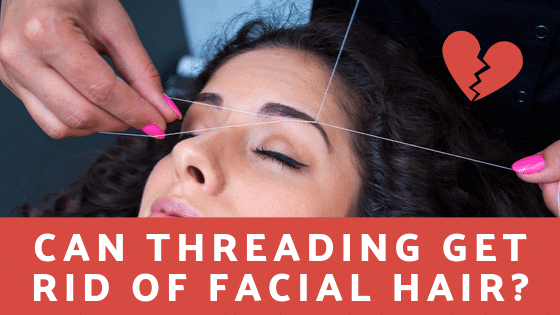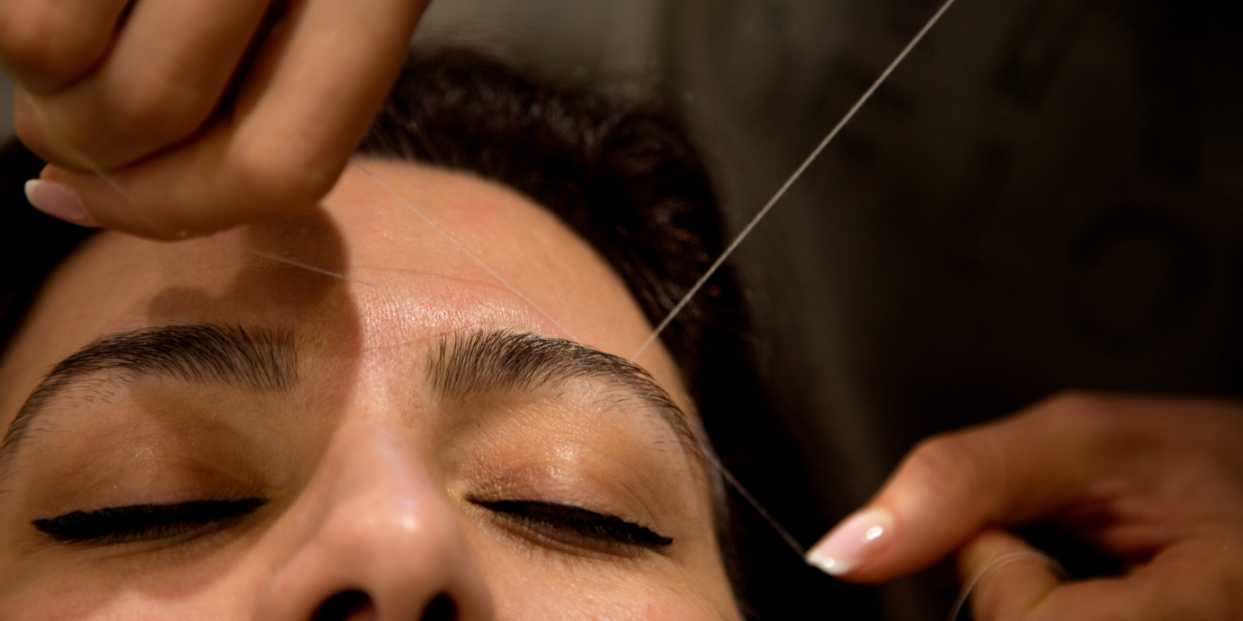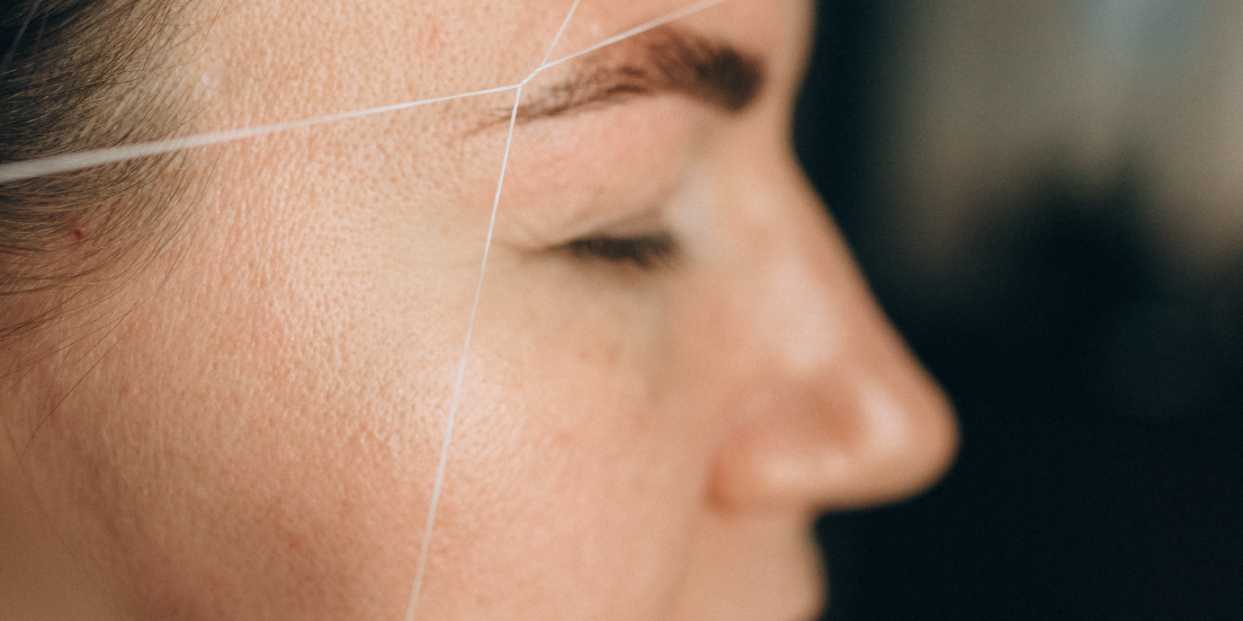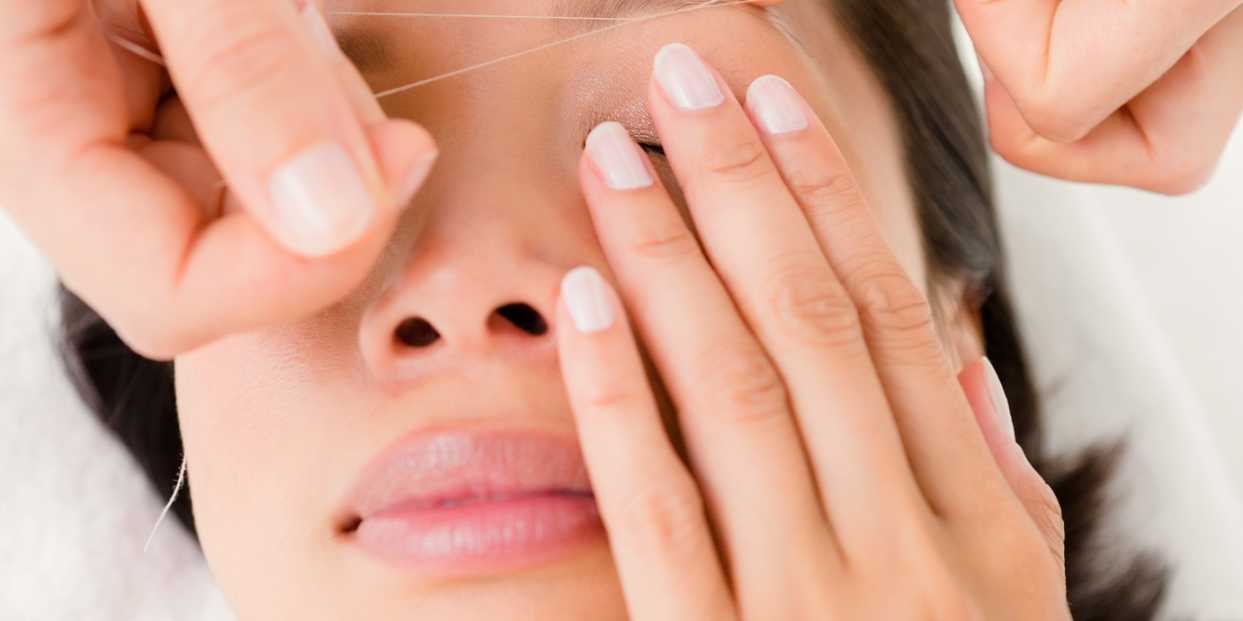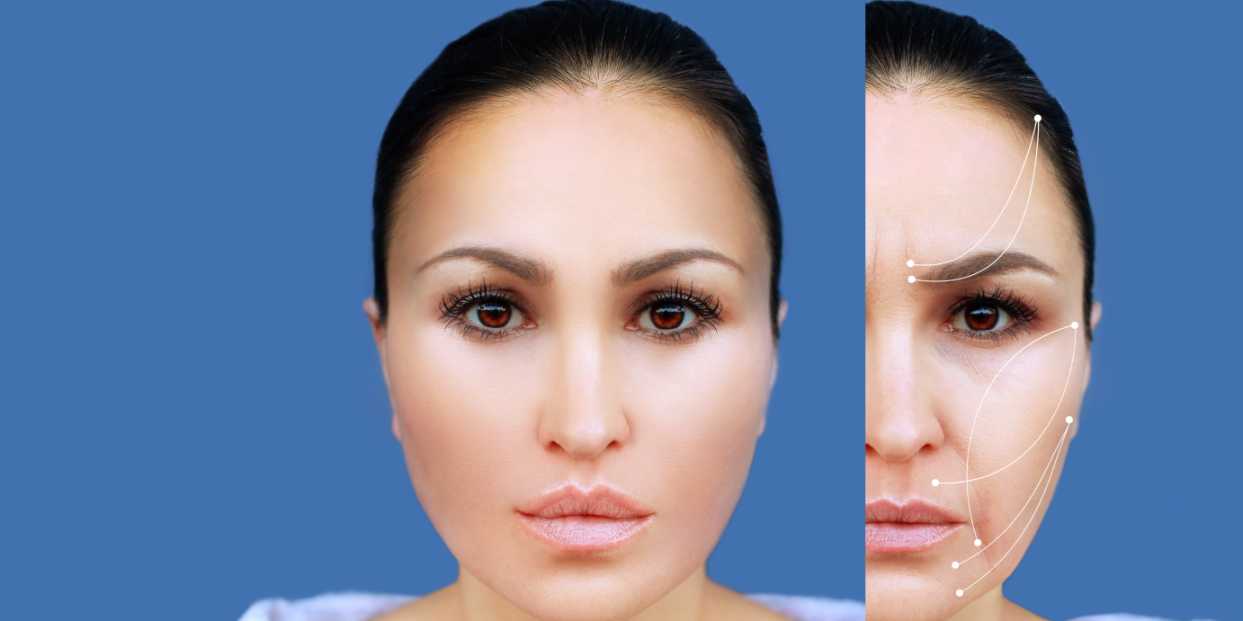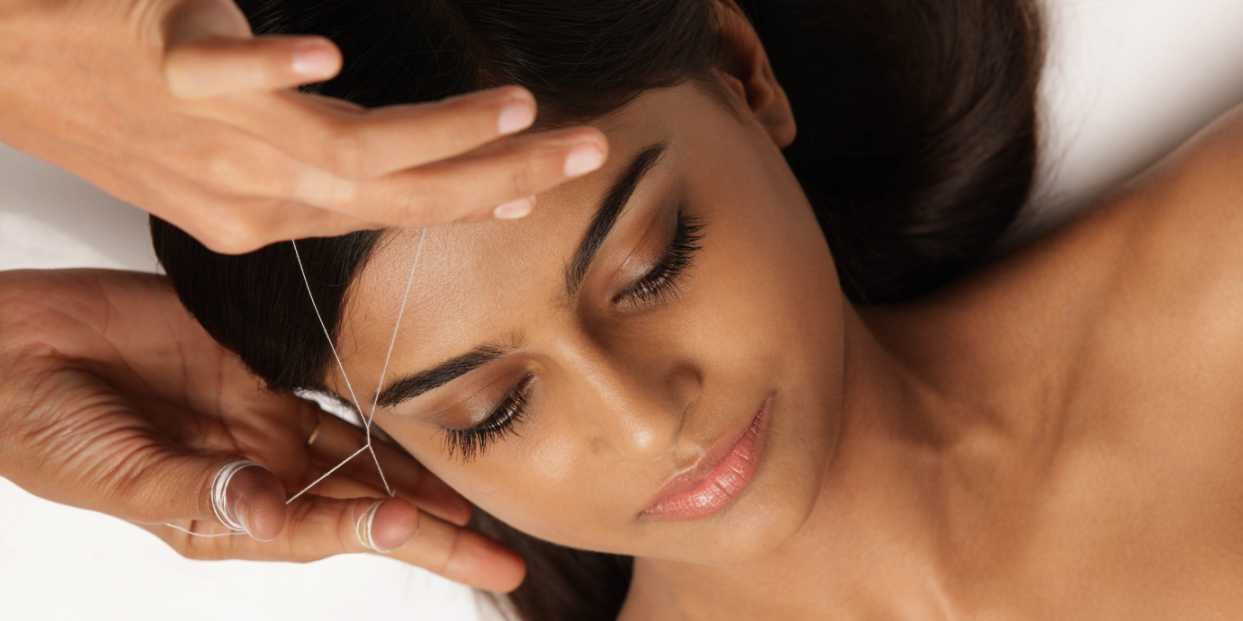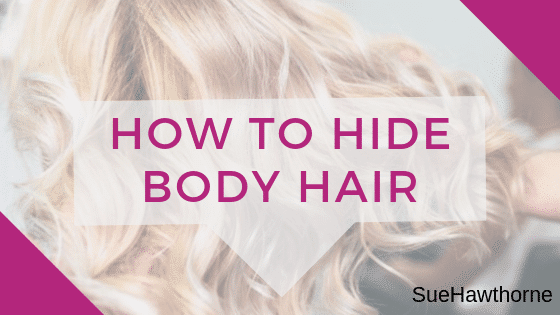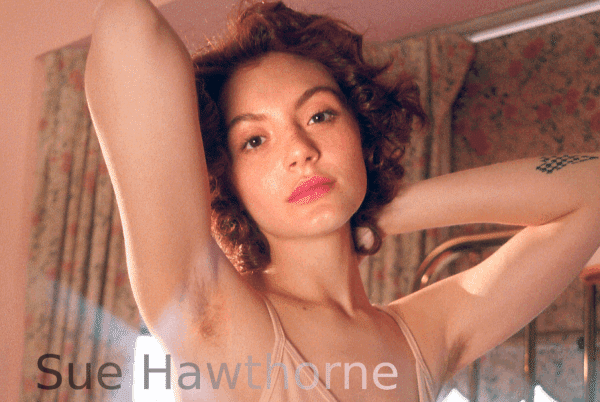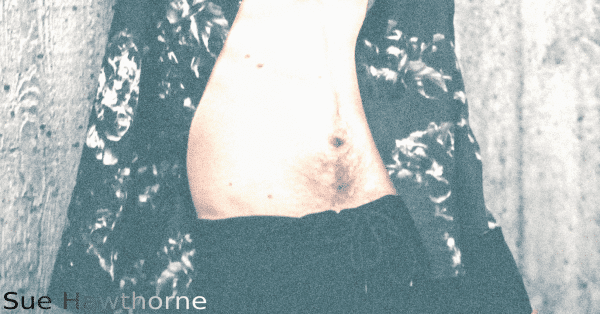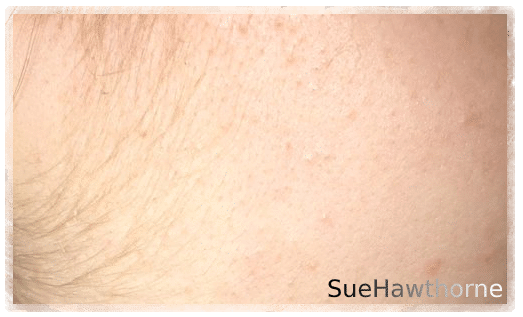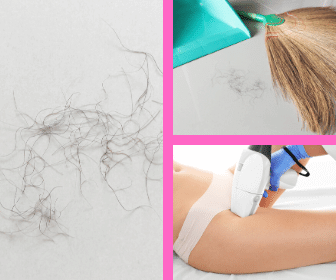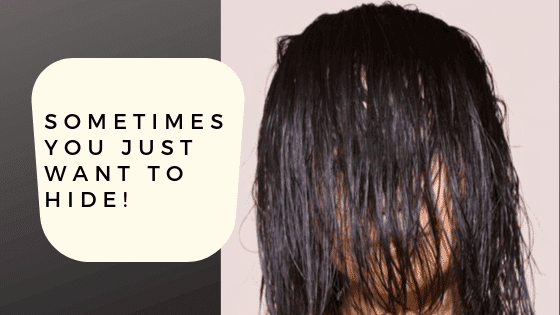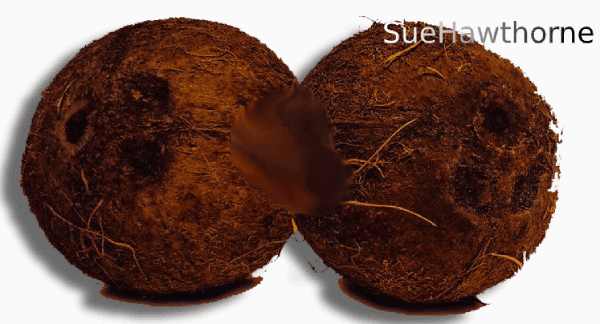There are several ways to remove unwanted facial hair. One of the ways that have become popular over the past decade in the West to remove facial hair has been threading.
Does threading work to get rid of facial hair?
So, threading DOES work to remove facial hair. However, there are several factors you must be aware of if you go down this route.
Is Facial Hair really a Problem?
Excessive facial hair becomes a problem if it is causing you to be self-conscious about your appearance. If this is the case, you will probably decide that your unwanted facial hair needs to be removed to restore your confidence.
Male and Female Facial Hair
Men and women share the same problem. But for women, having excessive facial hair, especially in places associated with masculine hair growth, may be highly undesirable. Some of these places may be the upper and lower lip and sideburns. It is usually caused by either hereditary or hormonal factors.
Causes of excessive hair: hereditary or hormonal.
There are two causes for excessive hair growth on your face or other body parts, e.g., arms, chest, and back. It is either hereditary or hormonal.
Hereditary Factors of Facial Hair Growth
Hereditary factors are traits you are born with, i.e., your excessive hair growth is normal for people from your family.
Hormonal Factors of Facial Hair Growth
Hormonal factors, on the other hand, are triggered by drastic changes inside your body, e.g., ovaries or adrenal glands, resulting in hormonal imbalance. This may need the attention of a doctor.
In cases where excessive hair growth is caused by hormonal imbalance, your doctor must determine what is causing the imbalance.
In women approaching menopause, hair growth often happens due to the lack of estrogen (a.k.a. the female hormone). Estrogen is primarily produced in the ovaries.
During menopause and perimenopause, the ovaries produce less and less estrogen, and often in an irregular pattern. This results in a hormonal imbalance where androgen (male hormones) activity becomes stronger, often resulting in masculine hair growths and causing this excess and unwanted hair.
Important Warning About Hormonal Imbalance
If the hormonal imbalance is being caused by certain obstructions, then immediate action needs to be taken to deal with the obstructions. This may be growths or tumors in the ovaries or adrenal glands. Your excessive and unwanted facial hair is just a symptom of a more severe problem.
If your excessive facial hair is hereditary, either you live with it or get rid of it. Getting rid of it changes your outward appearance but will not change who you are by birth. Hair Removal is a decision you make to look better and feel better about your appearance. Or to satisfy your need for approval from friends and peers.
There are (at least) 6 popular methods to get rid of facial hair:
Shaving Facial Hair
Shaving is easy, practical, and very affordable. It involves a metal blade that cuts hair growth off of your skin. It can be done regularly with a great deal of success. The only risk associated with shaving is nicking or cutting your skin, which would expose you to infection.
Waxing Facial Hair
Waxing uses an adhesive (wax) applied on the patch of skin where the hair is to be removed. Before the adhesive dries up and completely hardens, it is pulled from the surface with another medium (e.g., paper or cloth), pulling out the unwanted hair. Waxing is a semi-permanent method of hair removal.
Threading for Facial Hair Removal
Threading involves the use of the manipulation of cotton threads to pull out facial hair from the skin.
Plucking Facial Hair
Plucking often involves the use of tweezers. It is also practical and very inexpensive, you can do it at home, and all you need are a pair of finger-operated tweezers.
Plucking is time-consuming since you need to uproot individual hair strands, one at a time. Also, it is painful. There is the problem of the hair strand breaking without getting uprooted, which could result in ingrowth.
Chemicals (depilatories)
Depilatories often come in cream. The cream is applied to the unwanted hair, and it dissolves the hair. Its action is limited only to the segment of hair growing above the skin, so hair regrowth appears 1 – 3 days afterward.
Laser (permanent) Hair Removal
Three laser treatment methods are considered permanent, including laser, IPL, and electrolytes. These methods attack the root or follicle growth and disable it, limiting hair growth to a very minimal and unnoticeable level.
Threading and how it is done.
Although threading has gained particular popularity over the past few decades, it is an ancient practice that originated in Turkey, India, and the Middle East. Women have been using this age-old method of removing unwanted hair for thousands of years before the practice was first known in the Western World in the 1980s.
Threading is a method of removing facial hair using a length of cotton thread (e.g., 2 – 3 ft) tied together at the ends to form a loop. The loop is held in tension by both hands and twisted several times. This creates a single twisted segment at the center of the loop. This then forms a sideways figure 8 (or infinity symbol.
This twisted segment slides left to right as the loop is manipulated on each side by the thumb and forefingers of the threading technician. This is similar to the open-close action of the thumb and forefinger when using scissors.
Sometimes the threading technician uses her/his mouth to hold the other end of the loop.
When the technician opens her right thumb and forefinger, the twisted segment (cutter) slides left. When she opens her left thumb and forefinger, the twisted part (cutter) slides right. When the technician passes (rolls) the twisted segment over hair strands, the hair strands get caught and get intertwined with the thread, yanking them off the skin.
This twisted segment pulls strands of hair from its follicles in quick action as it moves left to right or right to left. The threading technician guides the loop of thread carefully over your skin. In this way, he will remove line after line of hair until all the unwanted hair is removed or the desired shape is achieved.
Threading is one of the safest natural ways to eliminate unwanted facial hair.
- Threading does not use chemicals. Many of the store-bought and salon-recommended wax treatments for hair removal contain chemicals that may harm sensitive skin and may be bad for your health. Also, these chemicals might trigger allergic reactions to your skin.
- Threading is 100% all-natural, and the possibility of adverse or allergic reactions is quite remote.
- Threading is ideal for sensitive skin. Your skin may not only react to the chemicals in the wax but also to the general pulling action involved in waxing. Waxing involves using sticky adhesive (wax) on the area of your skin where the hair is to be removed. If you have thin, sensitive skin, removing the adhesive wax on your skin may remove a layer of skin or irritate it. This could expose your skin to infections.
- Although your skin is also touched during threading, only the hair is pulled and not any part of the skin.
- Threading lasts a long time. Because of the complete removal of the hair follicles in threading, it takes longer for new growth to appear. Depending on your skin type or other factors, it usually takes 3 – 4 weeks before hair starts regrowing.
- Aside from effectively removing facial hair from its follicles, threading naturally exfoliates the skin surrounding the hair strands through the rolling action of the twisted segment of the thread. The topmost layer of your skin is also cleared of dead cells and cleaned.
Disadvantages of threading.
- Threading takes skill. Threading is an age-old tradition that is learned through lots of training and experience. It isn’t straightforward to do threading on your own, in the privacy of your home. Although threading is a very efficient natural way of removing unwanted facial hair, it isn’t that easy. It may look easy, but only because threading technicians are highly trained in the art. Don’t try threading your eyebrows at home if you have no training. You might end up ruining them!
- Threading requires the skilled hands of a trained technician to be done right, so you have to spend more. This counteracts the inexpensive nature of threading, as it only requires a length of thread to be able to accomplish. But if you think you have the patience and talent to learn to thread, you can go for it. But even then, it’s best to have a skilled technician or practitioner to guide you.
- Threading may cause pain and redness. The experience of pain during threading depends on your tolerance for pain. You may experience slight or sharp nipping sensations as your facial hair is yanked from your skin, but that’s about all the pain you’ll experience. The level of intensity of the pain doesn’t increase. Some women say they experience more pain in threading than in waxing. Still, others say the opposite.
- Threading will cause redness in the surrounding area where hair was plucked out. This is a normal skin reaction. The redness (sometimes also swelling) will subside in a matter of minutes or hours, depending on your skin’s response. Applying cold creams or ice packs helps ease the redness and swelling.
- Threading can be used only in small areas. This is one general disadvantage of threading. Threading is not such an efficient method if you want to get rid of unwanted hair on your legs or all over your body. It removes hair line-by-line, unlike waxing, which can remove unwanted hair from large areas at a time.
- Threading is slow. Threading is not recommended if you are in a hurry. Unless you are an expert, threading should be done carefully and precisely, which is hard to do if you are on the go, running late, or under pressure. Threading is not time-efficient. Your threading technician needs to be sure that every line of hair growth has been passed and that no line has been overlooked. This will also ensure that your hair regrowth will come out evenly.
- It causes ingrowth. An ingrown hair often results in hair that is not completely pulled out. This will appear as red pimple-like bumps on the skin, where the hair grows sideways or curls inside. If done right, however, threading will not cause ingrowths. But, there is a certain length of hair that is necessary for hair not to break and be plucked out completely by threading, i.e., there is a certain waiting period before which it is not advisable to thread; otherwise, you run the risk of incomplete pulling which may result in ingrowth.
- It is not permanent. Threading is only a semi-permanent hair removal method. It uproots your hair strands right down to the hair follicles, but it doesn’t kill the hair roots. This is the reason your unwanted facial hairs will still grow back. Though they may grow finer (according to some hair experts), they will still grow back.
So, can threading get rid of facial hair?
Yes, but not permanently.
The only way to get rid of unwanted hair forever is to undergo the more expensive hair removal methods, like a laser, IPL (Intense Pulsed Light), or electrolysis. These are labeled ‘permanent’ compared to threading because of the minimal occurrence of hair regrowth in areas where they are applied.
Can threading get rid of facial hair?
In conclusion, there is no permanent way to eliminate facial hair completely. Threading can get rid of facial hair, but not permanently. It can get rid of facial hair for a while, long enough for you not to worry about its regrowth too much.
This is good enough for many of us.
This is the reason why threading has gained popularity as a method of getting rid of unwanted facial hair:
It is all-natural, it is efficient, it lasts, and it is safe.
SUMMARY:
- Unwanted facial hair is a problem that both men and women face because it makes them self-conscious of their appearance.
- Threading, as a method of hair removal, has grown in popularity in the past decade or so in the West.
- Two major causes behind excessive and unwanted hair growth are hereditary and hormonal.
- There are at least six methods to get rid of facial hair: shaving, waxing, threading, plucking, depilatory cream, and laser (permanent).
- Threading is an ancient method of hair removal using cotton thread that is looped and twisted and passed over facial hair to remove them.
- Threading is not only 100% natural but also one of the safest methods to get rid of facial hair.
- There are disadvantages associated with threading, being an age-old method of hair removal, but these disadvantages can be easily overcome.
- Threading can get rid of facial hair, but not permanently.
- Threading should be done when the facial hair reaches a particular length for the pulling to be complete and avoid ingrowth.
- There is no permanent way to remove facial hair completely, but only to minimize its apparent visible growth.

